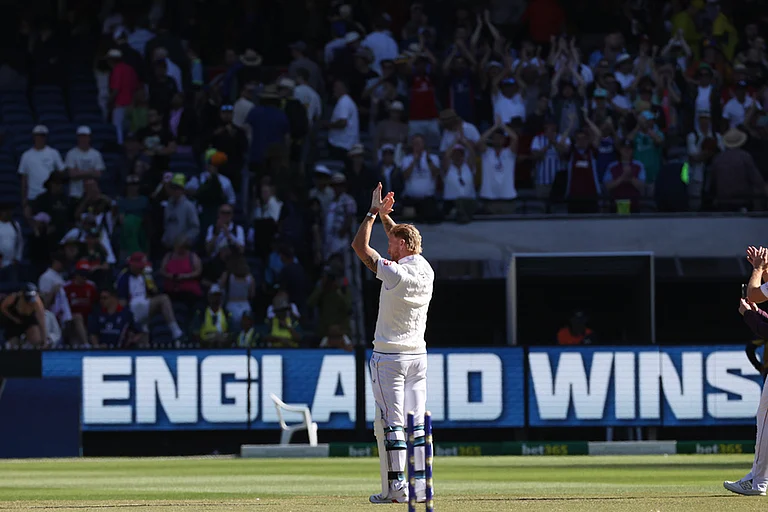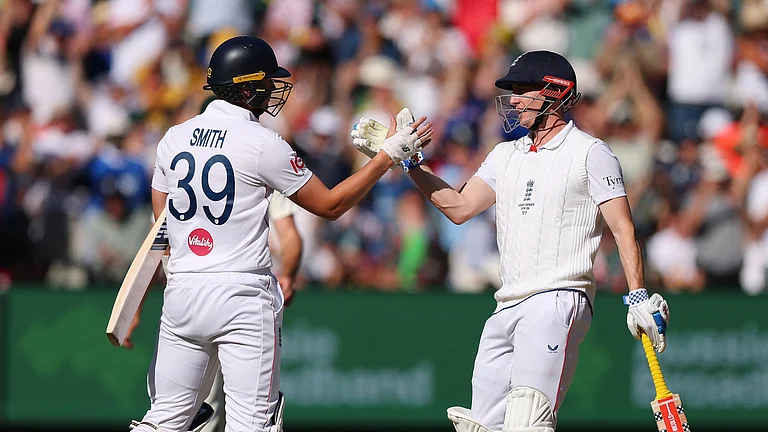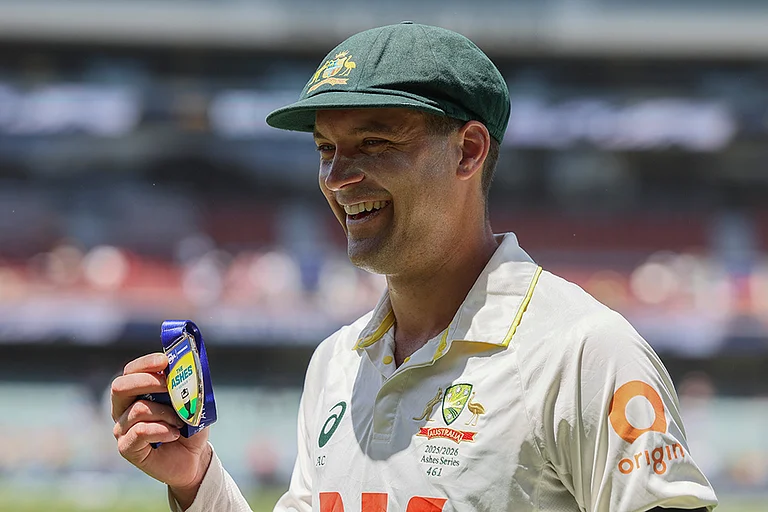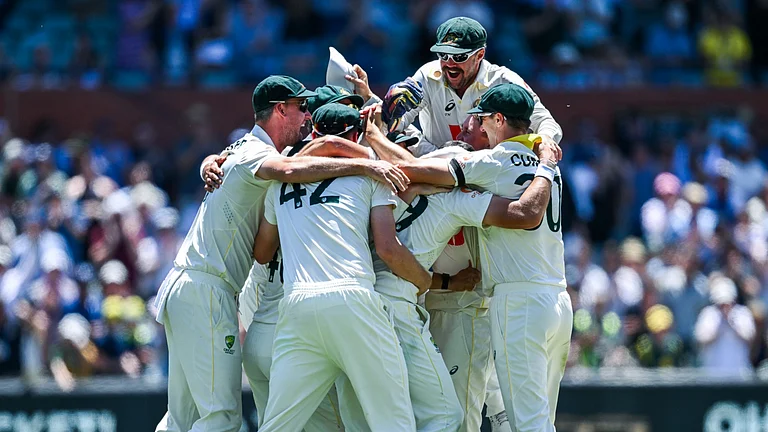The Anderson-Tendulkar Trophy has delivered quality cricket, high drama, and now a full-blown controversy around the most unlikely of characters: the Dukes ball. The second day of the third Test at Lord's between England and India was dominated not only by Jasprit Bumrah's heroics but also by frequent and contentious ball changes that left both cricket pundits and players frustrated.
Among the most vocal critics were former England captain Nasser Hussain and retired fast bowler Stuart Broad, who slammed the current handling of ball changes, highlighting how it impacts the rhythm and fairness of the game.
Nasser Hussain: "We're getting a bit precious about cricket balls"
The drama unfolded when India, riding on the momentum provided by Bumrah's devastating spell that accounted for Ben Stokes, Joe Root, and Chris Woakes, requested a ball change in the 91st over, citing the ball being out of shape. The umpires obliged, but the replacement didn't behave the same, prompting yet another ball change just eight overs later.
Nasser Hussain, speaking during the Sky Sports broadcast, was baffled. "There is a serious issue with the Dukes ball - both captains talked about it before the game and in this session it has been changed twice. But I think the ball is changed too often. I think we are getting a bit precious about cricket balls, getting addicted to having the perfect cricket ball for 80 overs."
Hussain added that cricket has traditionally allowed for ball deterioration over time and that changing it too frequently upsets that balance.
"In the history of the game, a cricket ball gets old and it gets soft. Go back generations and opening batters see off the new ball and it gets easier. Bumrah was unplayable in the first hour and had a Dukes ball that was doing something."
"I looked up from my laptop at the back of the comms box and went 'they are changing the ball?!' Why would you change a ball that is doing something? When you have got something, stick with it! They didn't."
Stuart Broad: "Dukes have a problem. They need to fix it"
Broad, who knows a thing or two about the intricacies of the red ball, took to social media to express his dissatisfaction with the current state of affairs.
"The cricket ball should be like a fine wicketkeeper. Barely noticed. We are having to talk about the ball too much because it is such an issue & being changed virtually every innings. Unacceptable. Feels like it’s been 5 years now. Dukes have a problem. They need to fix it. A ball should last 80 overs. Not 10," Broad posted on X.
Indian Camp Unhappy with Replacement Ball
After the first ball change, India's bowlers, especially Bumrah, found the replacement lacking. Shubman Gill, the Indian captain, spent an extended period during the drinks break discussing the issue with umpires Paul Reiffel and Sharfuddoula. The second change, which came after just 63 deliveries of the second new ball, only added to their woes.
Gill’s frustration boiled over when the newer ball handed to them turned out to be visibly older than the one being replaced. Bumrah had picked three quick wickets using the second new ball, but the replacement dulled quickly, allowing England to rebuild with Jamie Smith and Brydon Carse.
This isn’t the first instance of ball-related friction in the series. After the second Test in Birmingham, both teams had complained about the Dukes ball losing shape too quickly. During the first Test in Leeds, Rishabh Pant was even penalized with a demerit point for throwing the ball away in frustration after an umpire denied a request for a ball change.
Manufacturer Responds: "The ball is not a rock"
Dilip Jagjodia, the man behind the Dukes ball, offered a staunch defence, blaming changes in the modern game for the ball’s wear and tear. He added that authorities should consider allowing a new ball between the 60th and 70th overs, rather than sticking strictly to the 80-over rule.
"Everyone is blaming the ball. When players get ducks, it’s the pitch. When bowlers don’t get wickets, it’s the ball. The ball is supposed to deteriorate; it’s not a rock. Maybe the game’s authorities should consider allowing the new ball to be taken somewhere between the 60th and 70th over," Dilip told The Mirror.
Jagjodia also noted that stronger bats, bigger hitters, and boundary fencing are contributing to the ball's quick demise.
Where Does It Leave?
With cricket evolving rapidly, the role and expectations from a red ball are under more scrutiny than ever before. What once was considered natural wear and tear has now become a flashpoint in high-profile series like this one.
As Nasser Hussain warned, the game risks losing its essence if it continues to chase the "perfect ball." Until the manufacturers resolve the quality concerns and administrators reassess the laws, the Dukes debate will continue to rage on, one ball change at a time.


























